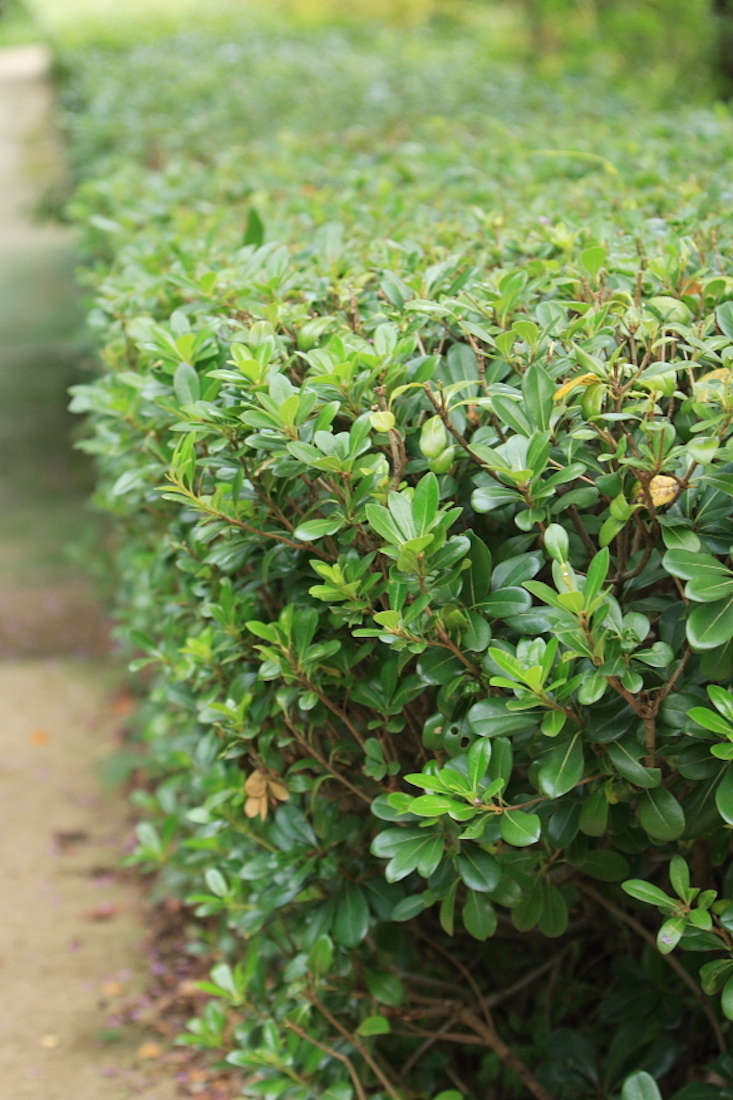In my garden I rely on pittosporum shrubs to behave like a sheer curtain, creating a shimmery 10-foot-tall privacy layer to block street sights and sounds. But that’s just me. With more than 200 species of these versatile evergreen shrubs and small trees, you can use rely on pittosporum to solve almost any problem—these versatile plants are amenable to being sheared, clipped, shaped, or left alone to develop shaggy, friendly silhouettes.
Is pittosporum the right plant for your garden? Read on to find out.

Widely grown throughout New Zealand and Japan, pittosporums are native to Asia and Africa and enjoy mild climates, full sun, and well-drained soil. But really, what plant wouldn’t if given the choice?

If you are looking for a specimen shrub to add interest to a corner of the garden, P. tobira has large, glossy green leaves and clusters of tiny white flowers in springtime.
If you’re looking for a small tree to thrive in a warm, humid climate, consider P. dasycaulon (native to India).

Cheat Sheet
- Consider pittosporum if you’re looking for a faster-growing, hardy alternative to boxwood.
- Think: fence alternative. A hedge of pittosporums will generally grow as tall and dense as you allow, but you can also keep it in check with twice-a-year clipping.
- Pittosporums are unfazed by deer, and resistant to disease and garden pests.
- “Repeats of pittosporum can be unexpectedly interesting, the plants themselves revealing handsome dark stems,” writes our UK contributor Kendra Wilson. Read more in Landscape Ideas: Boxed in by Boxwood? 5 Shrubs to Try Instead.

Keep It Alive
- Pittosporums are hardy in USDA growing zones 8 to 11, depending on the cultivar.
- It’s not unusual for a pittosporum to grow 24 inches in a single year (the grow rate will slow as a plant matures).
- Plant in spring or fall and water well, weekly, until the root system establishes itself.

Calling all gardeners and armchair horticulturalists: Sign up to have our weekly Gardenista Plant Guides delivered to your email inbox for our latest growing, care, and plant design posts.
For more growing tips, see Pittosporum: A Field Guide to Planting, Care & Design in our curated guides to Shrubs 101. Read more:
- True Colors: 9 Best Shrubs for Fall Foliage
- Everything You Need to Know About Shrubs
- 11 Ways to Add Curb Appeal for Under $100









Have a Question or Comment About This Post?
Join the conversation